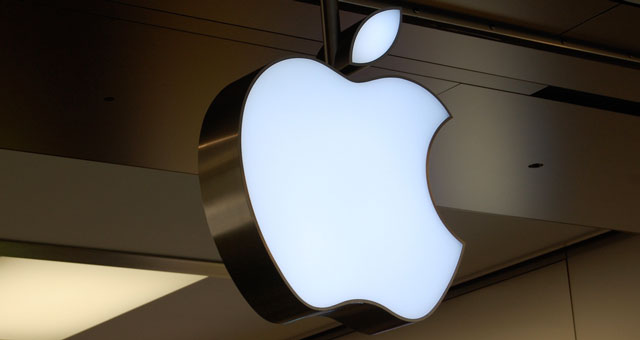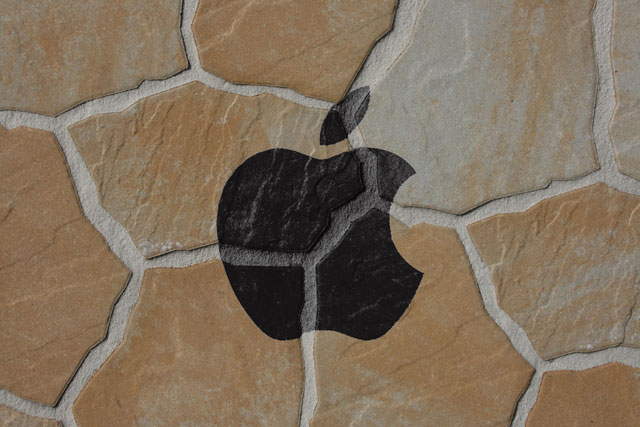
A lack of ideas is a gloomy thing to behold in a tech leader. Executives try to strike all the right notes and use all the latest buzzwords, but the numbers show a disturbing trend and competitors are way ahead with real innovations that can be seen and touched. This is now happening to Apple.
On Tuesday, Apple released its fiscal third quarter results. Revenue is 14,6% down year on year. Net income is down 27%. Even Apple’s enormous cash pile has decreased slightly as debt — which Apple uses to move overseas profits to the US — grew by US$5bn. iPhone sales are down by 23,3% on the year-ago quarter — and they are the backbone of the company’s revenue, still accounting for 56,8% of it.
The growth in services — 18,8% year on year — trumpeted by CEO Tim Cook during Tuesday’s earning call — does little to make up for that shortfall: Apple sold almost $6bn worth of services in the latest quarter and $24bn worth of iPhones, so the scale isn’t comparable.
Sales in greater China, Apple’s single biggest source of growth in recent years, are down by 33% year on year, more than in any other geographical region. “We face some challenges” was how Cook described this on the earnings call.
“A debacle” could be a better description. It’s not really caused by currency headwinds, a slowdown in the Chinese economy or any other factor beyond Apple’s control. The company is losing competitiveness in both hardware and software, and its concessions to smartphone commoditisation — such as the launch of the midrange iPhone SE, which Cook called highly successful — are doing little to stem the decline.
In hardware, it is losing to Samsung, a company whose earnings have increased by 17% year on year in the same quarter thanks to the strong sales of the flagship smartphones, the Galaxy S7 Edge and the Galaxy S7. Samsung struggled throughout last year, after Apple copied it by producing a large-screen phone, but then it fought back with a curved screen and better specifications. At the same time, it simplified its product line-up and cut costs.
The reason Apple has fallen behind is that for years, its research and development spending has lagged behind its rivals
Samsung’s edge on Apple is mainly in hardware. It’s the global leader in high-end displays, and its phones use more advanced display technology than iPhones. Apple will be buying Samsung’s OLED (organic light-emitting diode) panels starting next year, but Samsung will, of course, be the first to benefit from any technology advances — for example, Samsung is working on making these displays flexible, then foldable.
Samsung and other smartphone manufacturers are working closely with Google on its plan to turn mobile phones into virtual reality and augmented reality devices. Samsung’s flagships can already be turned into VR headsets, and these capabilities will be enhanced by VR features baked into the new version of Android, Google’s mobile operating system, which will debut this fall and is already available in beta. Lenovo has developed and will soon release an AR phone.

Foldable phones with VR and AR capabilities? Don’t expect them from Apple yet. Cook was asked about augmented reality on the earnings call, and his answer was vague: “AR can be really great. And we have been and continue to invest a lot in this. We are high on AR for the long run. We think there are great things for customers and a great commercial opportunity.”
Google’s plans are much more specific, and there are real products attached to them. Cook isn’t just following the Apple tradition of not talking much about devices that haven’t been released yet — he doesn’t have much to say. He touts tiny improvements (“beautifully redesigned apps for music, maps and news”) or advances long since made by Google (“machine learning enables Siri to understand words as well as the intent behind them”) as if they can make a difference for his company — the way AR, VR and flexible screens surely will to the Android ecosystem.
The reason Apple has fallen behind is that for years, its research and development spending has lagged behind its rivals. The company has stepped it up recently, but it still hasn’t caught up.
Resting on one’s laurels is dangerous in any industry, but it can lead to especially ugly results in tech. Waiting for rivals to develop new technology, suffer from growing pains and reap all the early errors before putting out a product with all the kinks ironed out may be a good strategy, and it has served Apple well. But the rivals may be less kind to it in the future. They are unlikely to let Apple reap nearly all the profits again, as it has been doing on the smartphone market. The next phase of the mobile device revolution is happening elsewhere, and Apple will struggle to catch up, despite its enormous financial resources. — (c) 2016 Bloomberg LP




